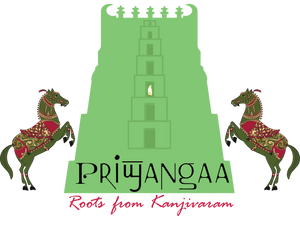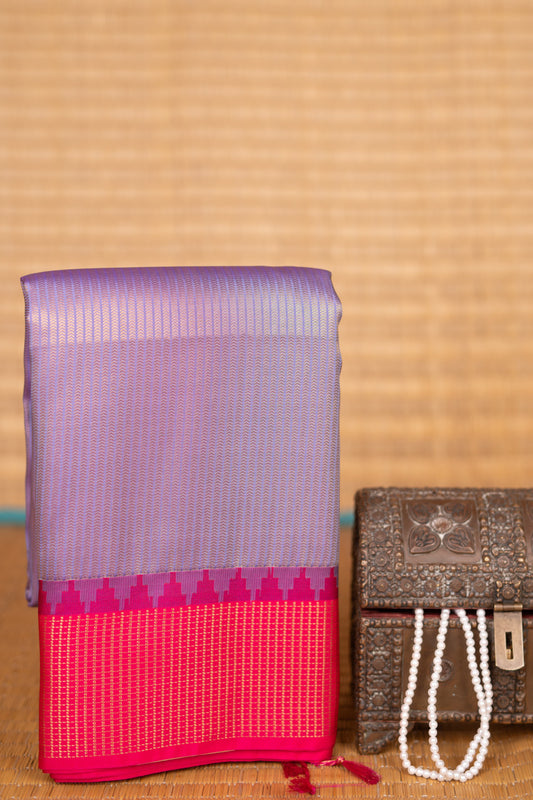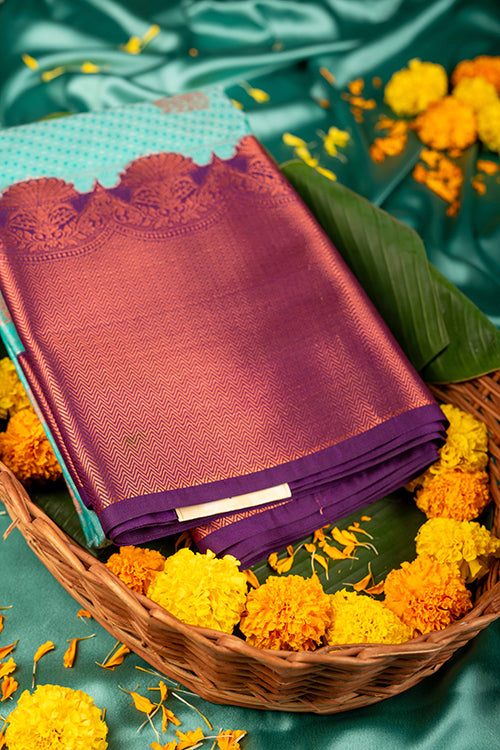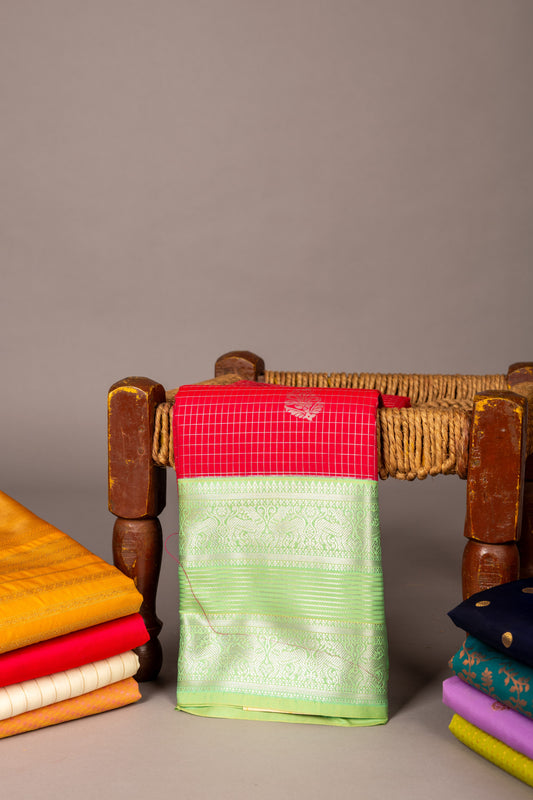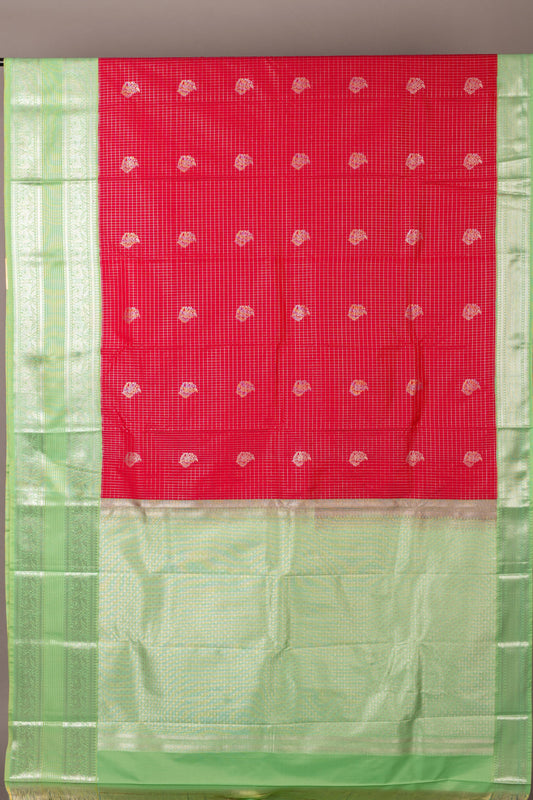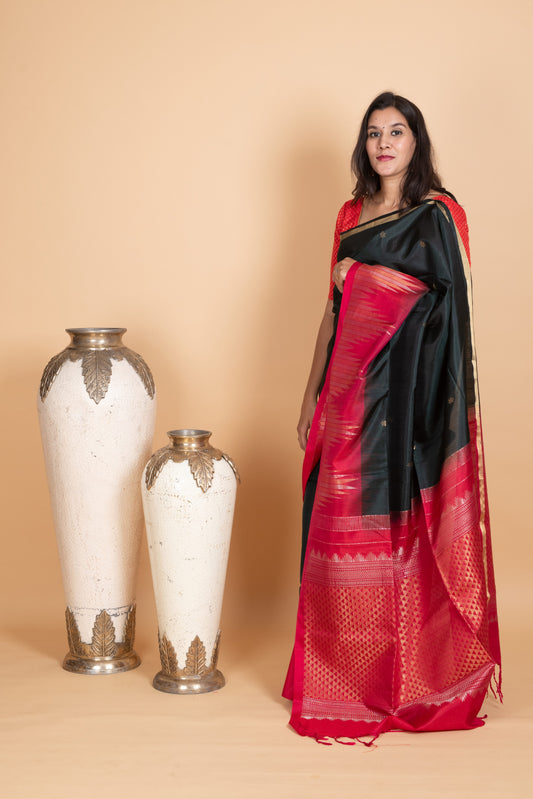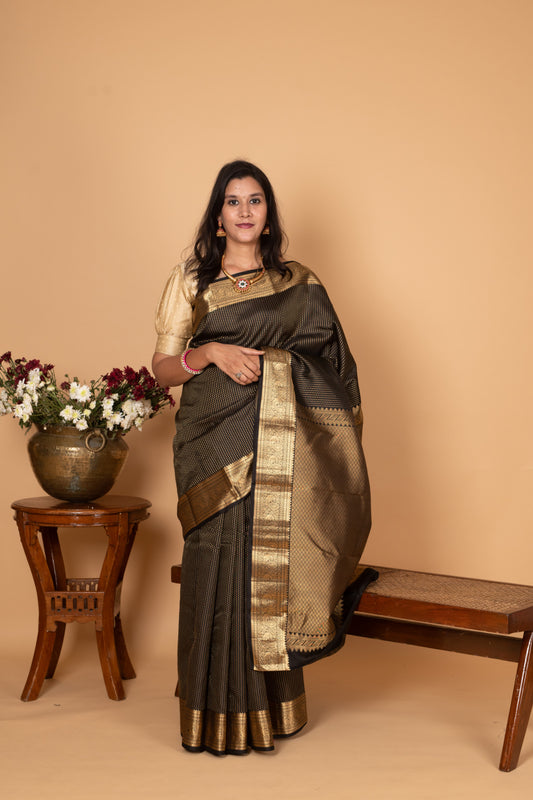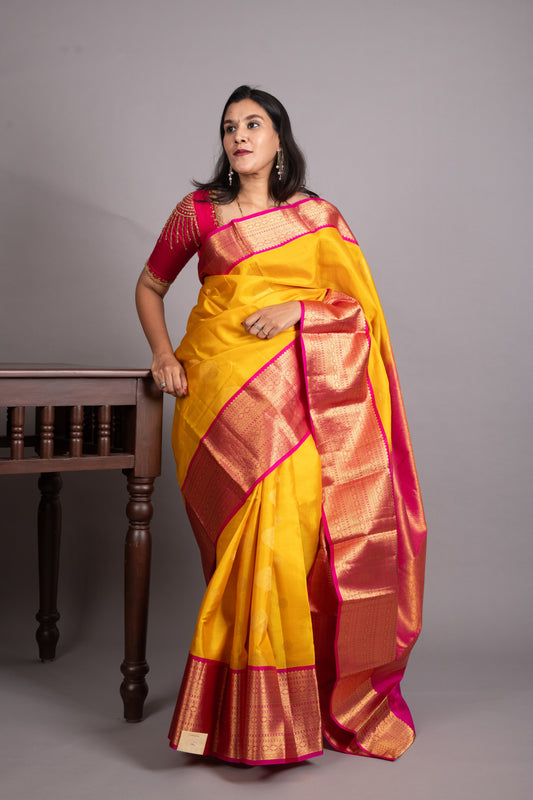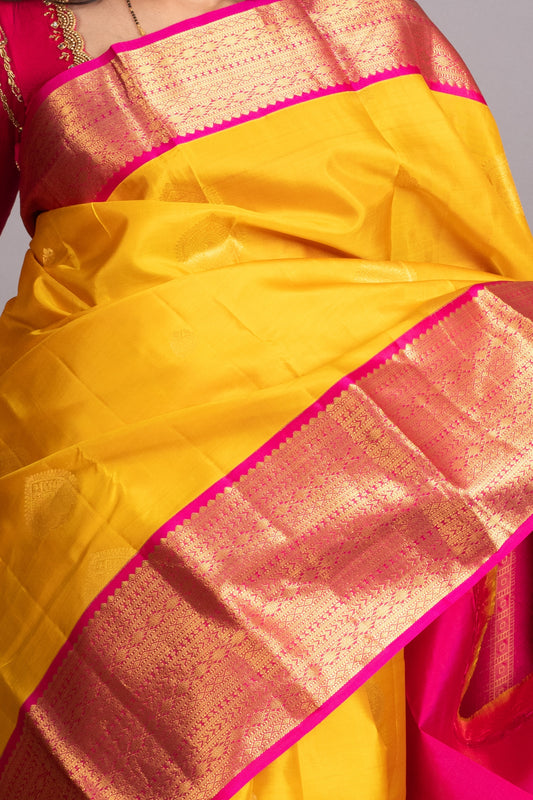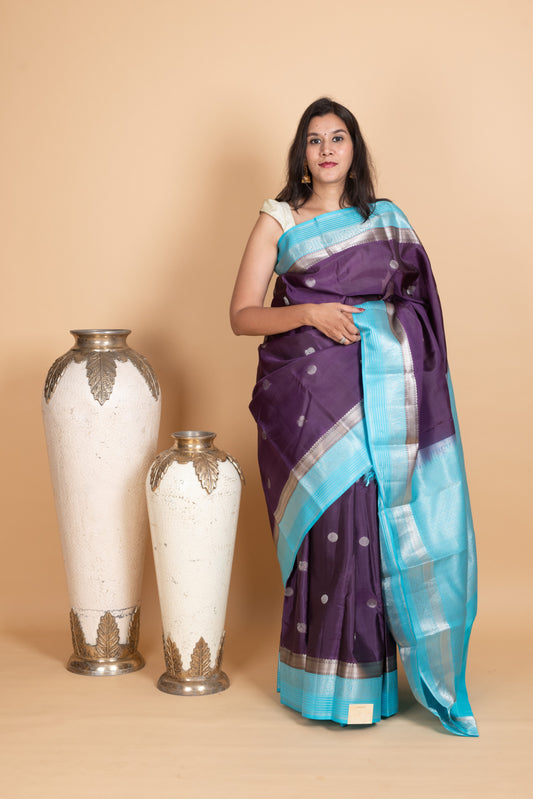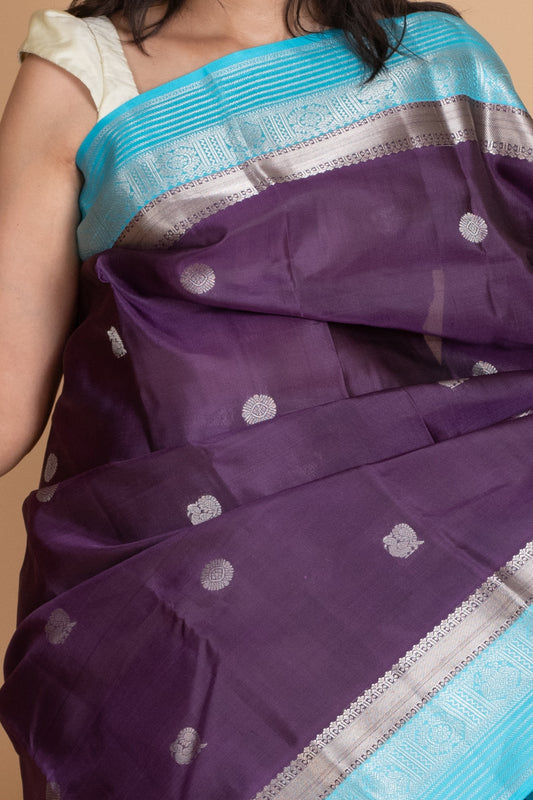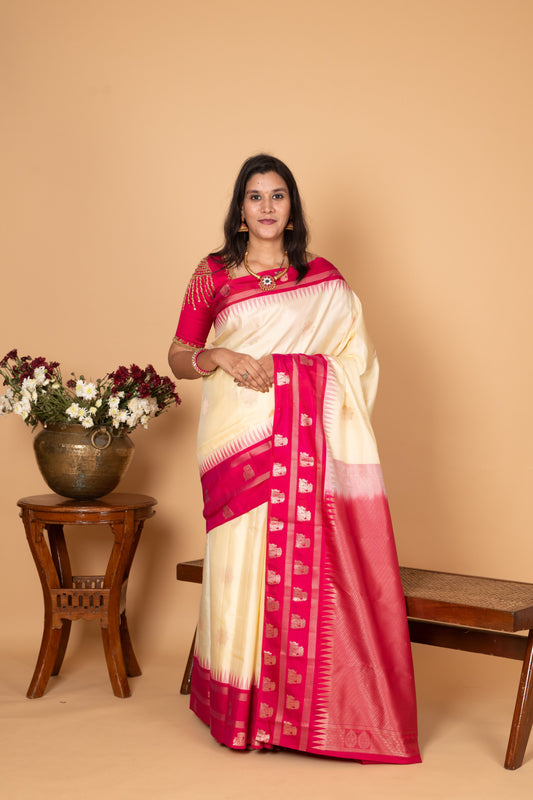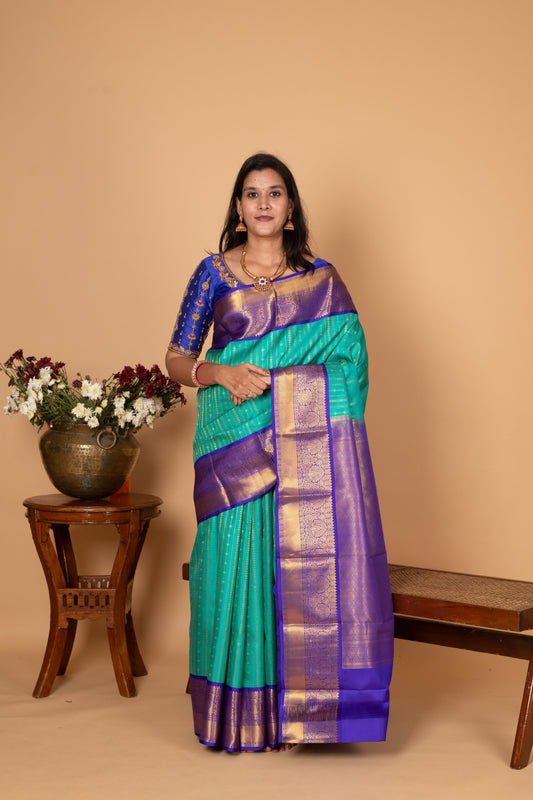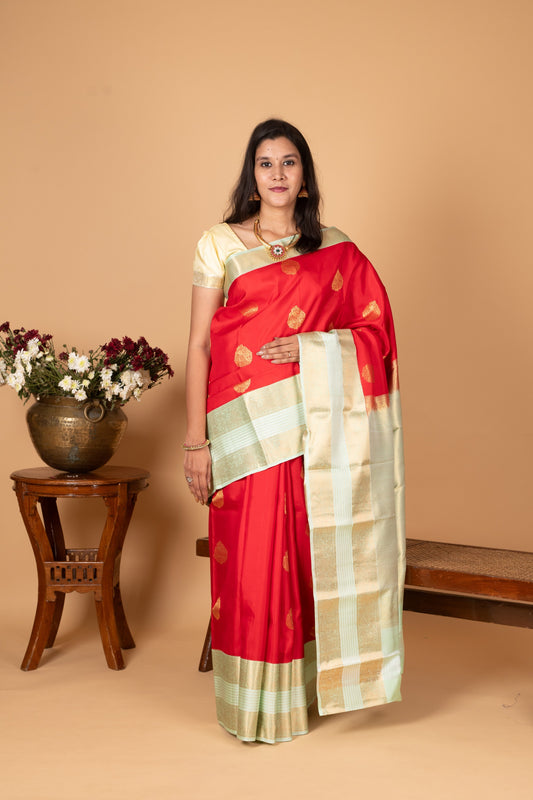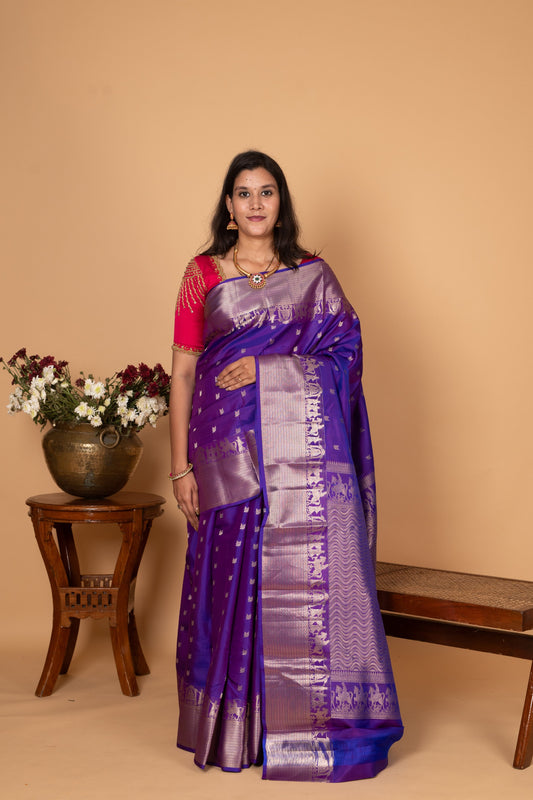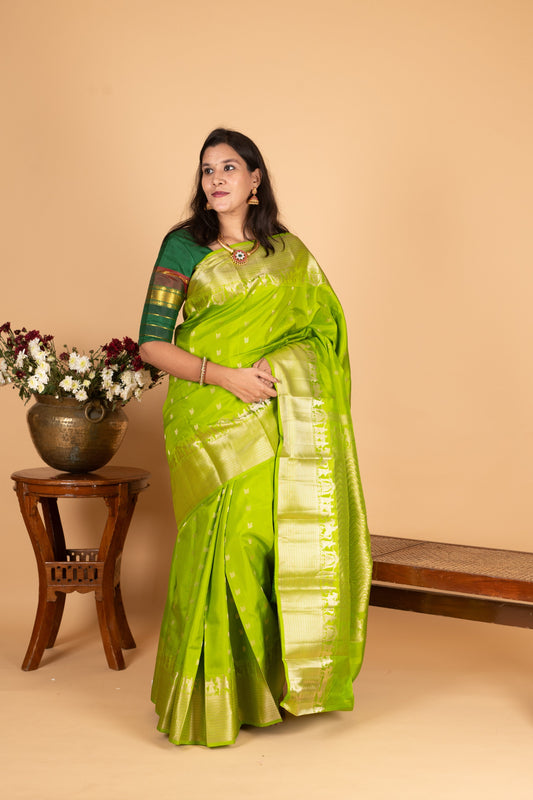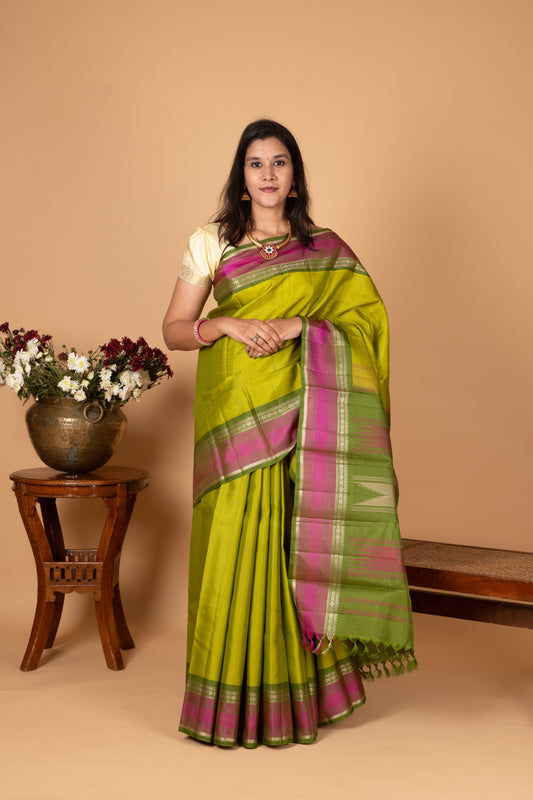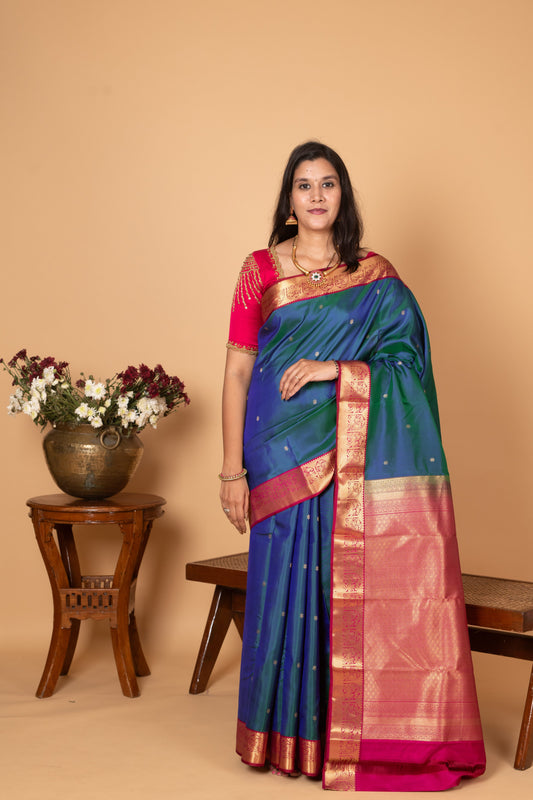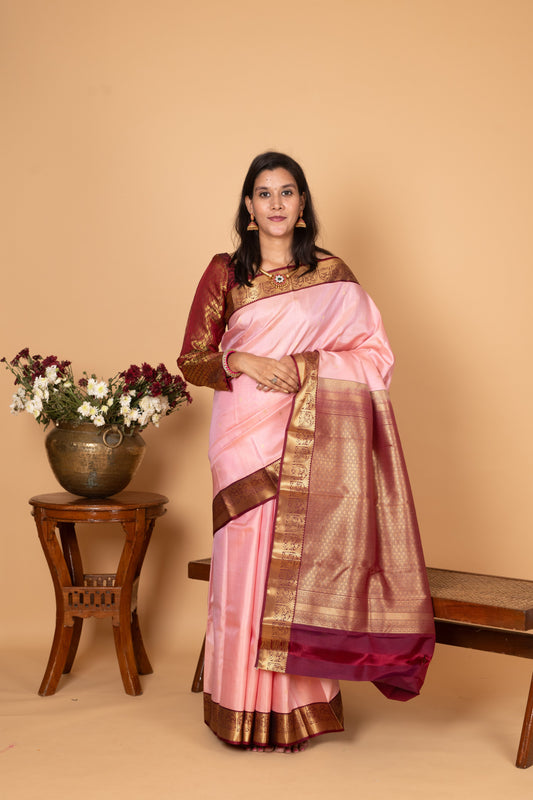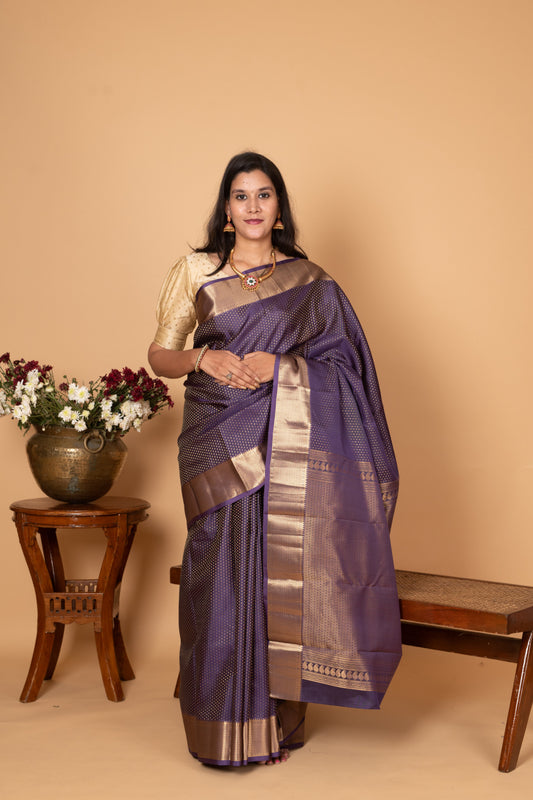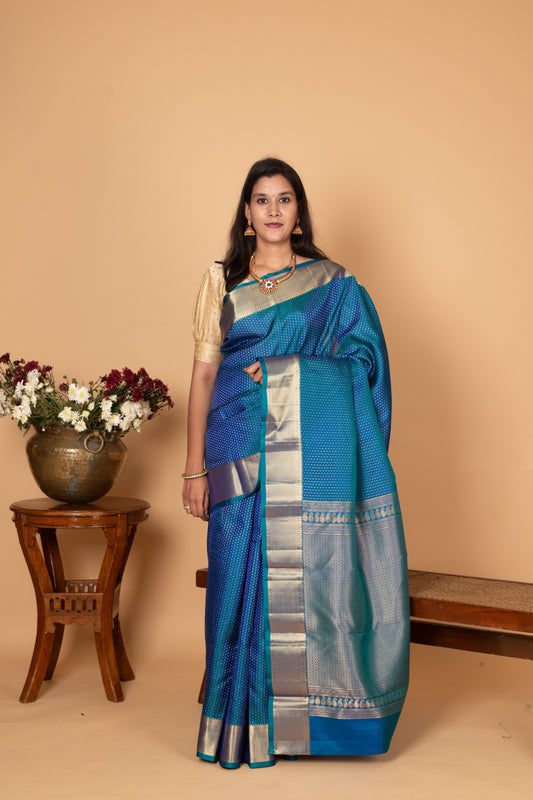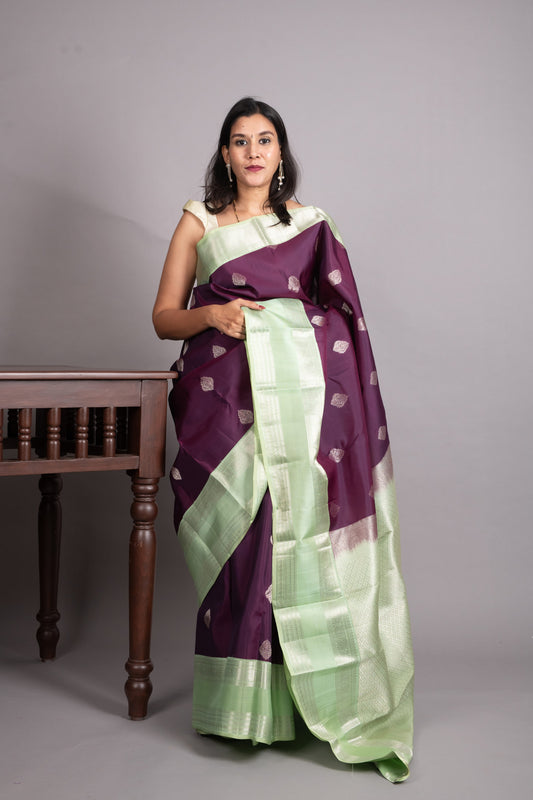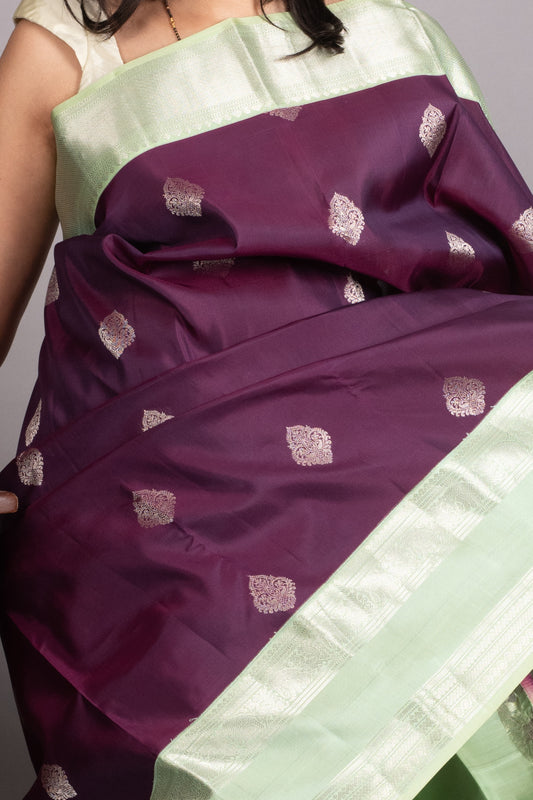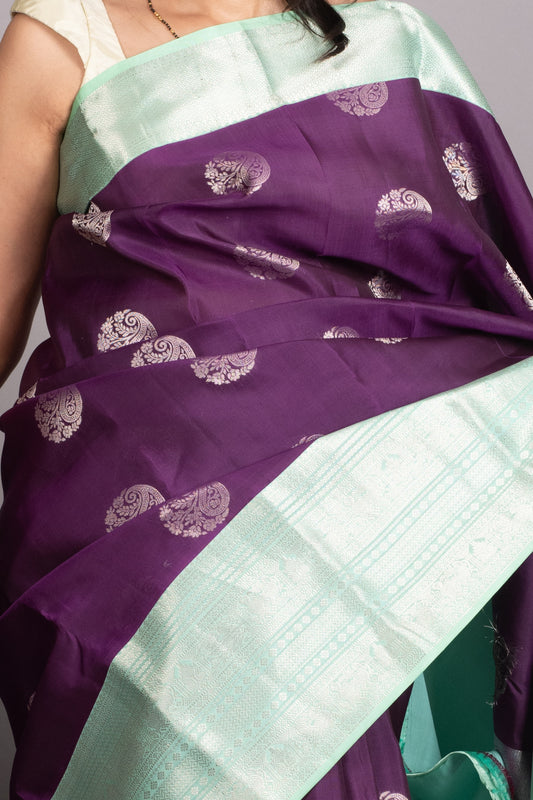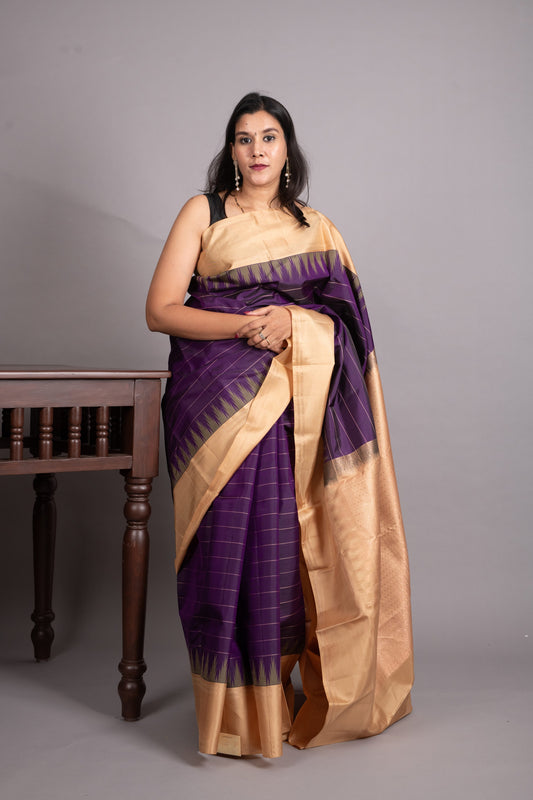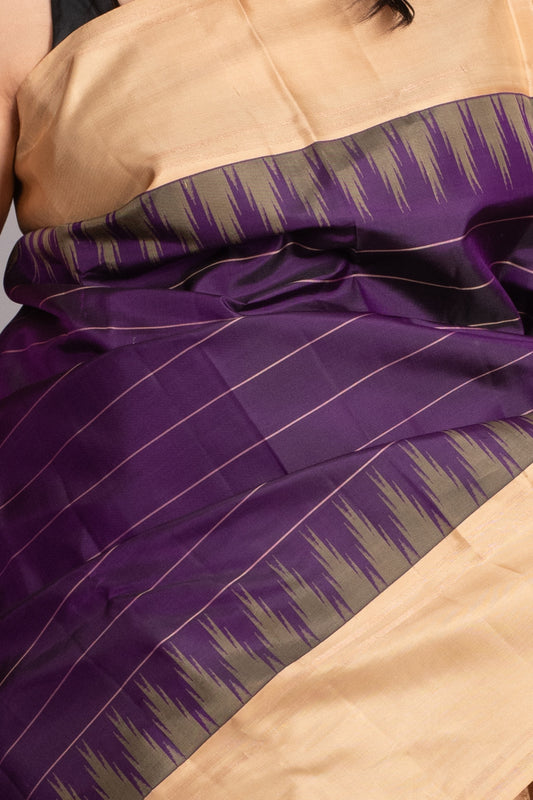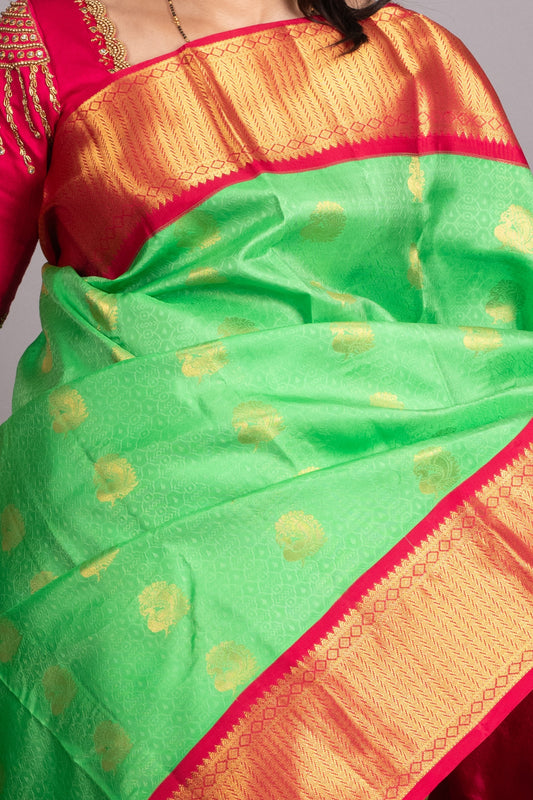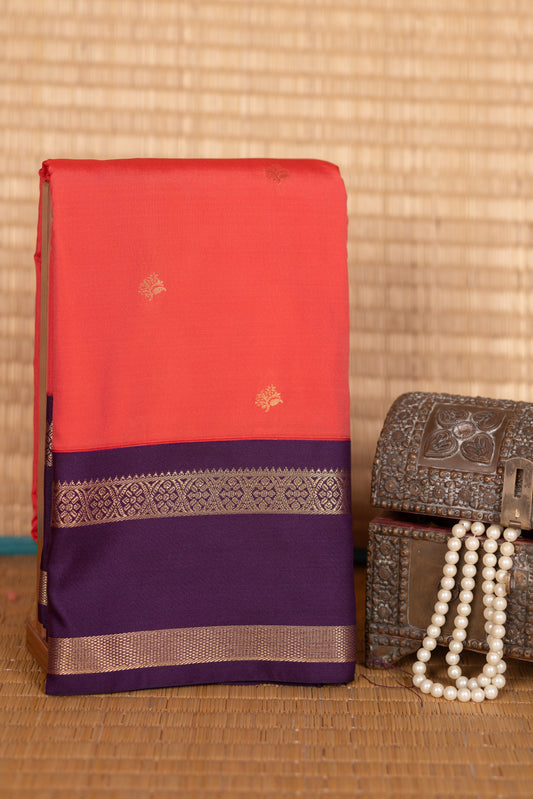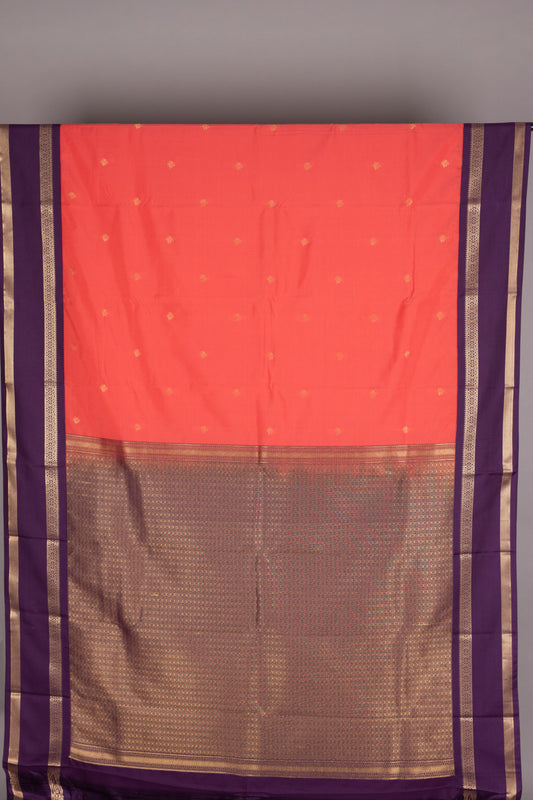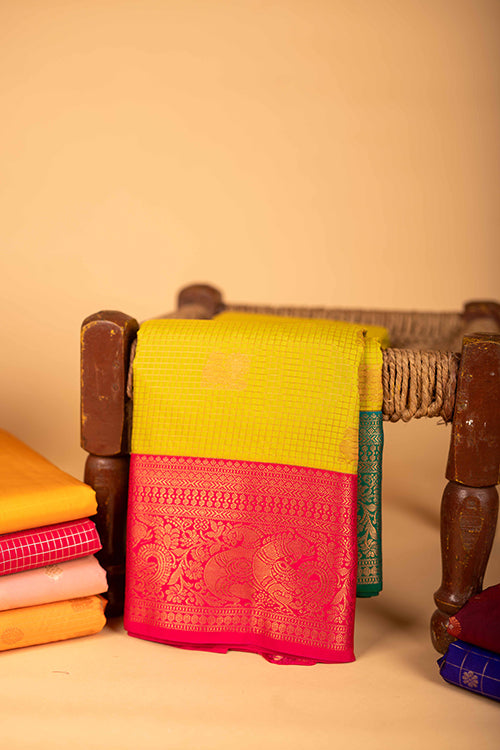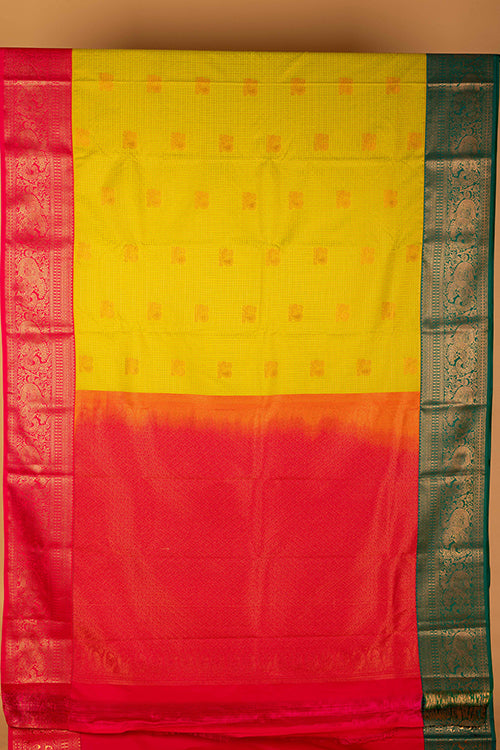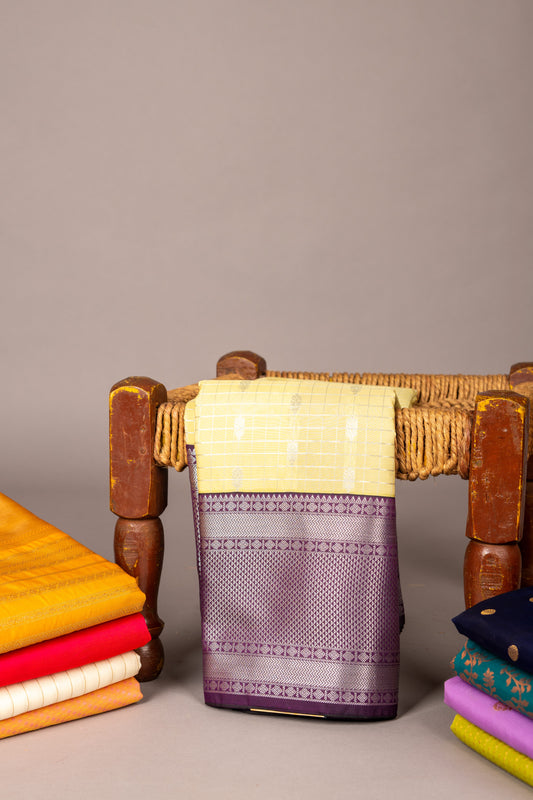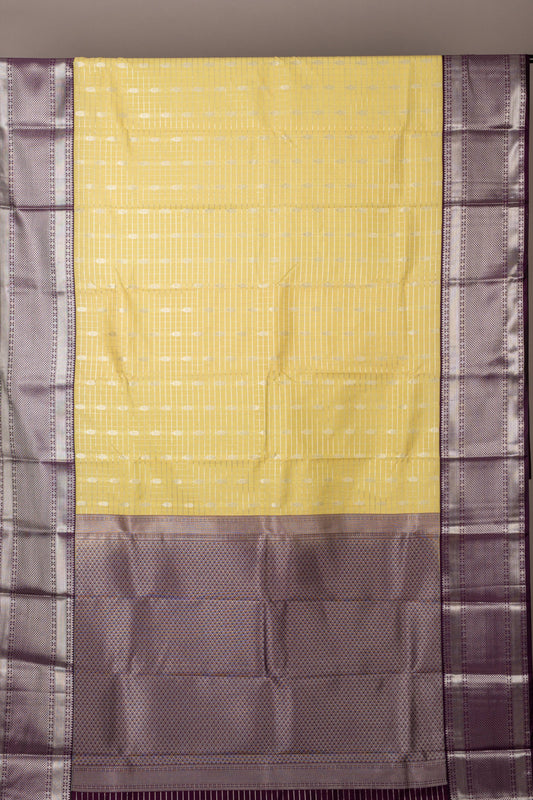Introduction
If you’ve ever walked into a saree store or browsed online for a silk saree, you’ve probably noticed one thing: the price tags vary a lot. Some start at ₹2000, while others soar past ₹1,00,000. So, what makes one silk saree affordable and another a luxury splurge?
Silk sarees are among the most sought-after traditional garments in India, not just for their beauty, but for their craftsmanship, material quality, and cultural value. But behind every price tag is a story; of the silk thread, the weaver’s skill, the region it comes from, and the artistry involved.
In this blog, we’ll break down what really affects the price of a silk saree in India. Whether you’re shopping for your first saree or investing in a wedding outfit, understanding these factors will help you make the right choice for your style and your budget.
What Affects the Price of a Silk Saree
1. Silk comes from Silkworms and It’s labor-intensive
Natural silk used in the original silk saree is derived from the cocoons of silkworms, primarily the Bombyx Mori species. These worms are raised in controlled environments, fed mulberry leaves, and then harvested after spinning their silk cocoons. The entire process takes weeks, and even a single saree may require thousands of cocoons. This makes silk:
- Scarce compared to synthetic fibers
- Costly to produce, especially when done ethically
- Click here to know more about how silk is made.
2. Type of Silk Determines Rarity and Cost
There are different types of natural silk, and each has its own cost based on availability and location:
- Mulberry Silk – Most commonly used, but still expensive due to its soft texture and luster.
- Tussar Silk – Harvested from wild silkworms, more affordable but coarser.
- Muga Silk – Exclusive to Assam, known for its golden sheen and extremely limited supply.
- Eri Silk – Ethical “ahimsa” silk, where the worm isn’t killed; more sustainable but higher in price due to lower yield.
Rarer silks have a higher production cost which results in higher saree prices.
3. Craftsmanship:
Original handloom sarees take so many days together or even weeks to finish and are more expensive due to the skill and labor involved. Powerloom sarees are machine-made, mass-produced, and therefore cheaper.
4. Design and Embellishments
Elaborate Zari work, intricate embroidery, hand-painting, or threadwork can significantly increase the price. A plain silk saree may cost around ₹3,000, while a heavily designed bridal one can go well above ₹50,000.
5. Transportation and Regional Availability
If silk is sourced from remote or limited regions (like Muga silk or Pat silk), the logistics and transportation add to the final price of the saree. Importing raw silk to weaving centers also affects production costs.
6. Impact of Weather and Silk Farming Conditions
Silkworms are sensitive to climate, and droughts, floods, or pest outbreaks can reduce silk supply. When supply goes down but demand remains steady (especially around festivals or wedding seasons), prices naturally increase.
Top Silk Varieties in India & Their Price Range
India is home to a rich variety of silk, each type rooted in a specific region and weaving tradition. Here’s a look at the most sought-after silk sarees, their unique characteristics, and how much you can expect to pay for them:
1. Kanchipuram Silk (Tamil Nadu)
Price Range: ₹5,000 - ₹1,00,000+
Known for:
- Heavy silk texture, rich zari borders.
- Specific choice of women for weddings and traditional functions.
- Extremely durable and considered an heirloom piece.
2. Banarasi Silk (Uttar Pradesh)
Price Range: ₹3,000 - ₹50,000+
Known for:
- Intricate Mughal-inspired patterns and brocade work.
- Heavy pallu and opulent look.
- Popular among North Indian brides.
3. Mysore Silk (Karnataka)
Price Range: ₹2,000 - ₹20,000+
Known for:
- Smooth texture, minimalist look, and vibrant colors.
- Lightweight and ideal for both casual and festive wear.
- Silk Mark-certified varieties from KSIC are highly reliable.
4. Tussar Silk (Jharkhand, Bihar, Odisha)
Price Range: ₹1,500 - ₹30,000+
Known for:
- Natural gold sheen, earthly texture.
- Lightweight and breathable.
- Often used for hand-painted or tribal designs.
- Less expensive than mulberry silk but still elegant and eco-friendly.
5. Muga Silk (Assam)
Price Range: ₹5,000 - ₹50,000+
Known for:
- Naturally golden-hued silk, exclusive to Assam.
- Popularly known as the “Golden Silk”
- Extremely durable and often becomes glossier with age.
- Limited production makes it rare and valuable.
- Considered one of the rarest silks in the world. So, prices are rising steadily.
6. Eri Silk (Assam, Meghalaya)
Price Range: ₹2,000 - ₹20,000+
Known for:
- Soft, matte texture, great for sustainable fashion lovers
- Known as “Ahimsa Silk” (Non-violent silk)
- Primarily used in stoles, shawls, and modern sarees
- Growing demand for ethical fashion is pushing up its popularity and price.
Best Places to Buy Silk Sarees in India & Their Specialties
India’s diverse regions are home to some of the most iconic silk-weaving traditions. If you’re planning to shop for authentic silk sarees, here are the best places to visit, and what type of silk each location is known for:
1. Kanchipuram & Chennai (Tamil Nadu) – Kanchipuram (Kanjivaram) Silk Saree
- This city is the heart of South India’s silk industry
- Known for heavy, handwoven sarees with rich gold zari work
- Ideal for bridal wear and grand occasions.
2. Varanasi, Uttar Pradesh – Banarasi Silk Sarees
- Famous for intricate brocade and Mughal-inspired motifs
- Perfect for weddings and festive wear
- Available in pure silk, organza, and georgette silk blends
- Visit local weavers or government emporiums for authentic, handwoven varieties.
3. Bengaluru & Mysore, Karnataka – Mysore Silk Sarees
- Mysore silk is soft, glossy, and minimalist with rich colors
- Best for formal and everyday elegant wear
- Official KSIC (Karnataka Silk Industries Corporation) stores sell certified Mysore silk.
- KSIC sarees even come with a unique code and hologram for authenticity.
4. Bhagalpur, Bihar – Tussar Silk Sarees
- Bhagalpur is known as the “Silk City of India”
- Specializes in Tussar silk which is popular for its earthy tones and handwoven textures
- Great for casual, artistic, and office wear.
- Visit local handloom cooperatives for better prices and original weaves.
5. Sualkuchi, Assam – Muga & Eri Silk Sarees
- Sualkuchi is called the “Manchester of the East” for silk production
- Muga silk is exclusive to Assam, known for its natural golden color
- Eri silk (Ahimsa silk) is eco-friendly and ethically made
- Sualkuchi sarees are mostly sold through local artisans.
6. Chanderi & Maheshwar, Madhya Pradesh – Chanderi and Maheshwari Silk Sarees (Silk-Cotton Blends)
- Elegant, lightweight sarees with traditional motifs and zari borders
- Suitable for hot climates and daily ethnic wear
Handloom vs Powerloom Silk Sarees: Price & Value Comparison
One of the most important factors influencing the cost of a silk saree is how it’s woven – by hand or by machine. Understanding the difference between handloom and powerloom sarees can help you decide where your money is better spent.

Handloom Silk Saree
Woven manually on traditional looms by skilled artisans, these sarees are time-consuming, it takes continuous days or even weeks to complete a single saree. It involves craftsmanship, detailing, and minor irregularities which make each saree unique. Price ranges from ₹5,000 to ₹1,50,000+. High-end pieces with intricate zari work or heritage weaves like Banarasi or Kanchipuram can go even higher.
Important features:
- Unique and artisan-made
- Durable, high-quality silk
- Culturally and ethically significant
- Supports traditional livelihoods
- But it is less available for budget shoppers
Powerloom Silk Sarees
These are machine-made using automated or semi-automated looms; Mass-produced and faster to make; Designed to mimic the look of handloom at a lower cost. The price of Powerloom silk sarees ranges from ₹1,000 to ₹10,000. It can go slightly higher depending on the material and brand.
Important Features:
- Affordable and easily available
- Lower durability
- Lacks the handcrafted charm
- Often uses synthetic or blended silk
Check this to know more about the Handloom sarees.
Silk Saree Price Trends in India – 2025
Silk sarees have always been a coveted choice for special occasions, and 2025 is no different. However, the price dynamics are evolving due to several economic, social, and market factors. Here’s a deep dive into what’s driving silk saree prices this year:
1. Rising Raw Silk Costs
The cost of raw silk has been steadily increasing in 2025, driven by:
- Limited supply of quality mulberry silk due to climate changes affecting silkworm farming.
- Increasing labor costs for sericulture (silkworm farming).
- Growing demand globally, putting pressure on availability and prices.
- This rise in raw material cost directly pushes up the price of silk sarees, especially pure mulberry silk varieties like Kanchipuram and Mysore silk.
2. Growing Demand for Handloom & Sustainable Sarees
More buyers are valuing handcrafted and sustainable fashion, willing to pay a premium for:
- Artisan-made sarees that support traditional craftspeople.
- Organic dyes and eco-friendly materials.
- This shift towards conscious buying means that handloom silk sarees, traditionally more expensive, are seeing greater demand, supporting higher price points.
3. Inflation and Rising Labor costs
Like many sectors, the textile and handloom industry also face rising wages and inflation. Skilled weavers demand better pay.
4. Popularity of Regional Silks Boosts Prices
Silk types like Muga silk from Assam and Tussar silk from Eastern India are gaining national and international attention. This rising popularity is driving:
-
More production investment in these regions.
-
Higher prices due to limited output and growing demand.
5. Impact of Digital Marketplaces
The rise of online platforms offering authentic silk sarees has also influenced pricing. Greater price transparency allows buyers to compare and choose wisely. Discounts and flash sales make some varieties temporarily affordable, but premium silk sarees continue to hold or increase their price.
6. Festive & Wedding Season Price Spikes
Traditionally, prices spike during major Indian festivals and wedding seasons, when demand surges sharply.
Smart Shopping Tips for Silk Saree Buyers
- Do early purchases before the festive seasons to avoid price hikes.
- Set a budget before you start shopping.
- Ask about return policies, especially for online buys.
- Compare multiple stores to understand market rates.
- Verify authenticity, especially with high-price purchases.
- Invest in quality now, which could mean owning a valuable heirloom, as prices are unlikely to fall soon.
Why Shoppers Prefer Priyangaa for Silk Sarees

In the house of Priyangaa, you can choose your perfect fit, whether it’s based on your budget, style or occasion. With a wide range of silk sarees available at all price points, from affordable everyday wear to elegant designer pieces, Priyangaa makes it easy for every customer to find something that suits their taste and spending plan. Their commitment to quality, fair pricing, and transparent dealings ensures that you get the best value for your money, no matter what you choose.
So now you know, that selecting the perfect silk saree doesn’t have to break the bank. Understanding the different types of silk, their craftsmanship, and pricing trends can help you make an informed choice that suits both your style and budget. Browse through Priyangaa’s stunning silk saree collection online today and find the perfect piece that fits your style and budget effortlessly!
